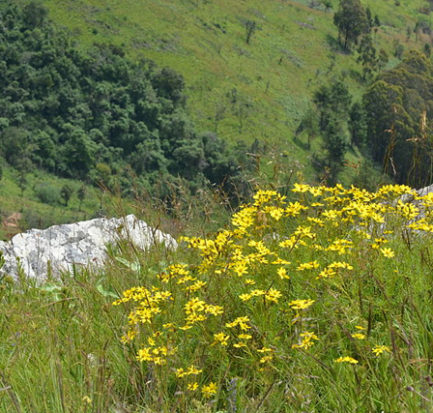Ruaha National Park is located in the central part of Tanzania. The national park is part of a comprehensive ecosystem that also features Muhezi Game Reserve, Kizio Game Reserve, Rungwa Game Reserve, and Mbomipa WMA making it one of the largest protected areas in all of Africa. Ruaha National Park draws its name from the Great Ruaha River flowing through the park.
The Ruaha National Park was declared one of the Seven Natural Wonders of Tanzania on April 4, 2014. Visitors and potential travelers should learn more about what makes the Ruaha National Park one of the Seven Wonders of Tanzania.
What makes Ruaha National Park a natural wonder?
Statistically speaking, Ruaha National Park is the largest national park in Tanzania encompassing 7,809 square miles (20,226 sq km). It could be argued that it is the largest national park or protected area in all of Africa. The park is also renowned for the 10,000 plus population of elephants.
Aesthetically speaking, it is a bird watchers haven featuring over 570 species of birds. Other key wildlife includes the African Wild Dog, Greater Kudu, Roan and the Sable Antelope. Travelers can hope to experience the following:
- Lion
- Leopard
- Cheetah
- Giraffe
- Zebra
- Impala
- Jackal
- Eland
- Roan
- Kudu
- Wild Dog
- Sable Antelope
- Crocodile
- Monitor Lizard
The wildlife is the primary draw to Ruaha National Park, however visitors can also experience Acacia trees, baobab trees, and many of the other 1,650 different species of plant life.
Ruaha National Park provides a variety of ecosystem and physical characteristics that include:
- Great Rift Valley
- River systems
- natural springs
- hot springs
- wetlands
- kopjes
- mountains and hills
What are the best ways to see and experience Ruaha National Park?
The best way to see and experience the wildlife and ecosystems of Ruaha National Park is through a safari. There are numerous lodges and game drive services that provide professional wildlife encounters. If you want to experience the whole park, you will need to count on multiple days for exploration because of the size of the park.
Safari vehicles provide the broadest encounter with nature because you can traverse more distance. Ruaha also allows walking safaris. These can provide a more personal and intimate encounter with nature.
You should plan for more time in the safari vehicle because the wildlife is more accustomed to the vehicles that human traffic. They tend to be more skiddish with people on foot making it more challenging to take observe or take pictures of the wildlife.
What is Ruaha National Park weather like?
Ruaha National Park weather is consistently hot and dry. Temperatures do not change much during the year. The months of October through March are slightly warmer than the months of April through September.
The more important question has to do with the rain. The rainy season runs from November through April. The majority of rain will occur as afternoon thunderstorms or showers. It rarely rains throughout the day.
Temperatures average around 81oF (27oC) for a high and drop during the evening to average lows around 57oF (14oC). The temperatures during the rainy season will start to get higher and even approach 100oF (38oC) before giving way to the coolness of the rains for the day. The warmer temperatures combined with the moisture of the rain creates high humidity.
When is the best time to visit Ruaha National Park?
Ruaha National Park can be visited year round but there are better times to visit the park. The best time to visit Ruaha National Park is during the months of June through October. These months account for the dry season, where temperatures are usually more comfortable. The dry season often makes it easier to find wildlife which will frequently congregate around or nearby waterholes.
The good news is that Ruaha is rarely congested with crowds, even during the high seasonal months of June through October. Another benefit of visiting Ruaha National Park during these months is the absence of mosquitoes.
Travelers should overall avoid the months of March, April and May (long rain months) because the rains are heavier and some lodges will even close. Although the rains usually occur in the afternoon, they can make the roads more challenging to navigate.
If you are a bird watcher, then traveling during the rainy season may be desirable. It is during these months that the park is full of migratory birds.
Photography Tips for capturing Ruaha National Park
There are no specific insights or tips for photography at Ruaha National Park. Tips and insights will be added as experienced or discovered. If you are a photographer and have insights to share for future photographers visiting Ruaha National Park, please submit them to Seven Wonders through the Contact Page.
